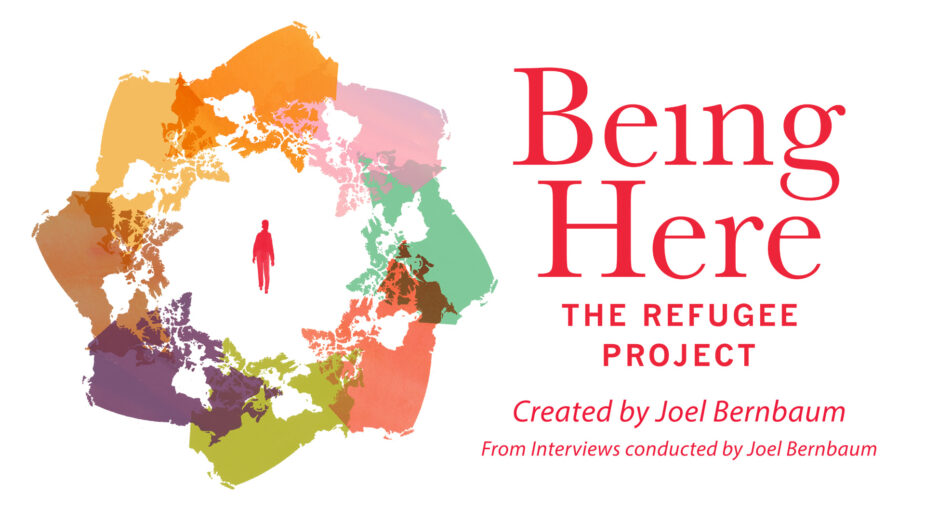
The new initiative, Belfry on Film, brought these stories and more to a virtual format due to COVID-19 restrictions
In response to the pandemic, the Belfry Theatre launched Belfry on Film — an initiative to bring recorded plays to remote audiences. The premiere production of this initiative is Joel Bernbaum’s newest play, Being Here: the Refugee Project.
Being Here, which ran from March 16-21, is a dramatization of interviews conducted across Canada with refugees and refugee sponsors.
Mark Dusseault, the director of marketing and communications for the Belfry, told the Martlet that Belfry on Film arose as a pandemic response. Being Here is the first of three productions that will be presented in this format.
“When we originally planned our spring season back in August of last year, [we hoped] that we would have a small audience and that we would be able to live stream to a larger online audience,” he said. Despite hopes, COVID-19 restrictions have ensured that Belfry on Film has been exclusively virtual so far.
Bernbaum is a director and playwright based out of Saskatoon, where he is a PhD student at the University of Saskatchewan. Being Here is the latest of Bernbaum’s verbatim theatre projects. Verbatim theatre uses words spoken by real people and is considered “[a] form of documentary theatre.”
Though it was created through Bernbaum’s interviews, the play was directed by Michael Shamata, an artistic director at the Belfry. Shamata and Bernbaum have worked together before on the play Home is a Beautiful Word, a 2014 verbatim play on homelessness that was also shown at the Belfry.
One of the central focuses of Being Here is the 2015 death and subsequent photos of Alan Kurdi. Kurdi was a two-year-old Syrian boy who drowned in the Mediterranean Sea when his family attempted to flee the country. In the play, a character named Eileen makes a powerful reference to the widely-circulated photos of the child’s body.
“[The refugee crisis] had a face. It wasn’t the faceless,” Eileen said.
The photos of Kurdi are shown for the first few minutes of the production, and are mentioned by the first few interviewed refugee sponsors. These photos were the driving force for many of those interviewed to become involved in aiding refugees on their journey to Canada.
Bernbaum focuses on two aspects of the refugee experience in Canada: the refugees themselves, and the predominantly white Canadians that sponsor refugees through personal means, organizations, or community groups.
According to Dusseault, the play originally was only going to focus on the stories of Syrian refugees, but soon expanded to include more perspectives.
“Originally, we were just going to focus on the Syrian refugees coming into Canada,” he said. “You’re hearing these stories and it can be quite an interesting and thoughtful way of presenting different points of view.”
The play explores the many struggles and complexities of being a refugee in Canada. The refugees share everything from their heartbreak over being forced to flee their homes, to their gratitude for being in Canada, to their constant worry of deportation. For example, a Palestinian couple living in Calgary, Alberta express their happiness with being in Canada, but are very worried that their paperwork will not go through and they will be forced to leave.
The sponsors, on the other hand, show that there are clear expectations for refugees that are coming to Canada. These expectations are most evident in the play when one refugee sponsor talks at length about a Syrian family that came to the country, and how things “went downhill fast” when the father of the family quit his job for a “ridiculous reason.” Another sponsor expresses grievances over the lack of progress a refugee was making in English, even though he was not even able to read or write in his native language when he arrived in Canada.
In an interview with the Globe and Mail, Bernbaum emphasized the centrality of the sponsor-refugee dynamic in the play. “At the heart of it, this play is about relationships,” he said.
Ultimately, the play lives up to Bernbaum’s intentions: it is a powerful portrayal of refugee experiences in Canada, trying to balance their families, deportation fears, being in a new place, and dealing with expectations of those who helped them get to where they are. It is also effective in portraying the deeper expectations that sponsors have, even if not vocalized directly, that are often not shared to refugees or to those who outside of this refugee work.
Dusseault said that the play received a lot of positive feedback from viewers, but that some also expressed the content of the play was a bit difficult to handle.
The Belfry’s website says that there will be recorded productions for spring 2021, but according to Dusseault it is likely that the Belfry will record productions, or stream them, beyond the spring.
“I suspect that we will be doing more filming. But I don’t know what that’s going to look like in terms of each of the productions going forward,” he said.








